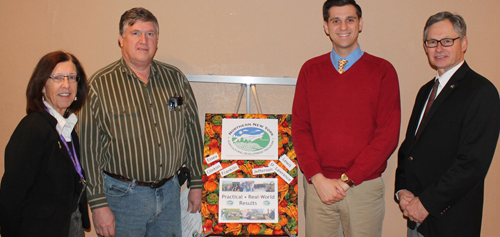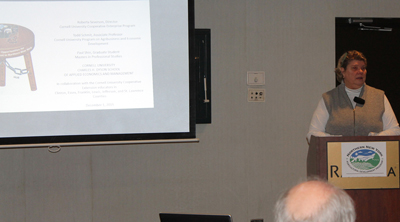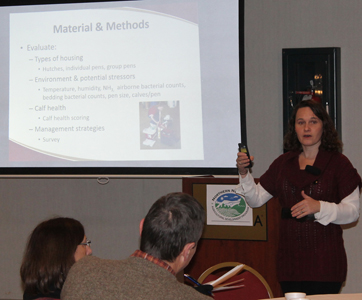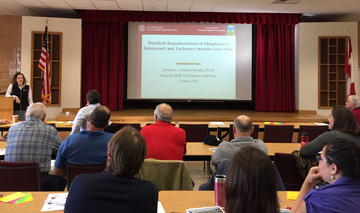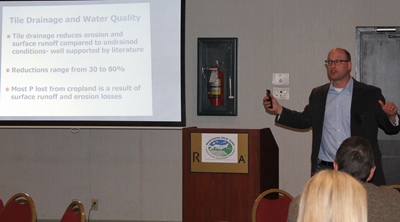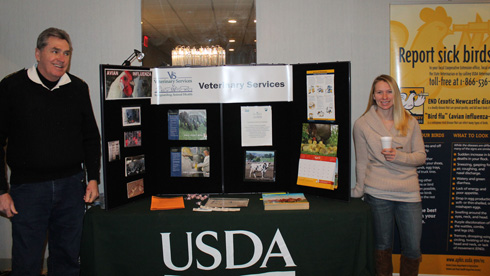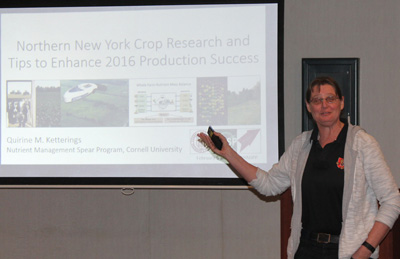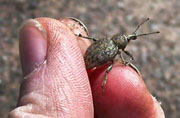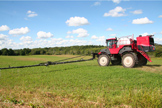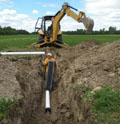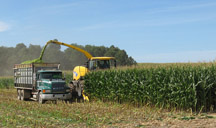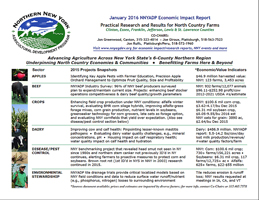
NNY Agricultural Development Program Economic Impact Report Shows Opportunities, Value of Regional Research
Northern NY. The recently-released Northern New York Agricultural Development Program Economic Impact Report indicates growth opportunities and the value of localized on-farm research that benefits not only the diverse agricultural sectors in Clinton, Essex, Franklin, Jefferson, Lewis and St. Lawrence counties, but often has a positive impact on farms statewide.
The report offers project highlights and economic indicators under the headings of Apples, Beef, Crops, Dairy, Disease and Pest Control, Environmental Stewardship, Food Hub, Food Product Innovation, New Business Development, Maple and Birch Syrup, and Young Farmers.
The Northern New York Agricultural Development Program Economic Impact Report posted at www.nnyagdev.org/index.php/about-us/nnyadp-impact-2/ is accompanied by NNYADP “Quotables” with comments on the value of the regional research and technical assistance program from farmers, researchers, agricultural specialists, and business owners. More than 100 farmers serve on the NNYADP steering committee.
NNYADP Co-Chair Jon Greenwood, a dairy farmer in St. Lawrence County, comments, “Farmers across the region look to the proactive research and survey work prioritized by the Northern New York Agricultural Development Program for the results and insights that they can apply in a practical way on their farms and that strengthen the agricultural industries that support our communities.”
NNYADP Co-Chair Joe Giroux, a dairy farmer in Clinton County, adds, “The Northern New York Agricultural Development Program projects in the past two years are more great examples of how the research work done here often serves as a sentinel alerting regional farmers to new field and livestock challenges, first wave opportunities for management response, and control solutions that may benefit farms here and beyond.”
NNYADP Co-Chair Jon Rulfs, a dairy and orchard owner in Clinton County, “The Northern New York Agricultural Development Program combines the on-the-ground knowledge of regional farmers, the academic expertise of the best researchers from Cornell University, Miner Institute, SUNY and others, and funding support from the New York State Senate to meet needs and develop opportunities to grow the regional farming industry in practical, timely and sound ways.”
Funding for the Northern New York Agricultural Development Program is supported by the New York State Senate and administered by the New York State Department of Agriculture and Markets. Economic impact reports for 2012-2015, project reports, resource links, and NNY events are posted on nnyagdev.org.
NNYADP Economic Impact Highlights
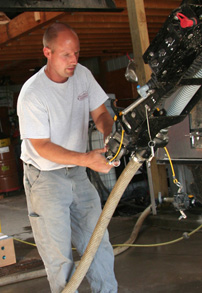 AGRIBUSINESS DEVELOPMENT
AGRIBUSINESS DEVELOPMENT
Under the heading of New Business Development, the Northern New York Agricultural Development Program Economic Impact Report notes that in 2015 five agribusiness services serving five of the six northern counties offered the custom application of nematodes proven by NNYADP research as a snout beetle management control. A Franklin County farm family that runs a seeds and spray service plans to start its own nematode-rearing lab in 2016.
AGRICULTURAL ENVIRONMENTAL STEWARDSHIP
The Northern New York Agricultural Development Program Economic Impact Report indicates opportunities to advance agricultural environmental stewardship with the results of field trials providing critical localized data on the impact of tile drainage on reducing erosion and the runoff of nutrients such as phosphorus and nitrogen. The results of this research project have been presented at farm industry meetings in California, Iowa, and New York.
BEEF PRODUCTION: 96 Percent Strong
Ninety-six percent of beef producers responding to a Northern New York Agricultural Development Program-funded survey of the regional beef industry said they plan to expand or maintain the current size of their farm business.
CROP PRODUCTION: Corn, Alfalfa, Forage
The Northern New York Agricultural Development Program Economic Impact Report lists 2015 projects that evaluated why some northern NY cornfields exceed projected yield expectations, analyzed corn silage hybrids under NNY growing conditions, addressed winter season survival of alfalfa, and assessed opportunities to improve forage production for dairy cows and other livestock.
CROP PESTS AND DISEASE ALERT
The NNY Crop Pest and Disease Survey project revealed no new challenges during the 2015 growing season, following identification in 2014 of head smut not seen in New York State cornfields since the 1980s and northern stem canker identified in New York State for the first time in 2014 in the region. Program leaders note that northern NY often serves as a sentinel alerting farmers statewide to pest or disease concerns and management responses.
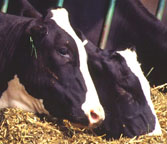 DAIRY PRODUCTION: Mastitis Research, Water Quality
DAIRY PRODUCTION: Mastitis Research, Water Quality
The second year of a Northern New York Agricultural Development Program-funded investigation into the lesser-known causes of dairy mastitis led by Quality Milk Production Services, Canton, NY, provided more critical insight in support of the $486 million regional dairy industry. The results of this work to date have been requested at meetings of dairy operators and veterinarians in Louisiana, Vermont, and New York, and the National Mastitis Council.
The Northern New York Agricultural Development Program Economic Impact Report notes that other dairy research conducted on NNY farms in 2015 suggests that the number of factors impacting water quality on a farm may lead to lost milk production of 5.5 to 14.2 lbs. of milk per cow per day.
A FOOD HUB for NNY: Farmers, Consumers, Food buyers Survey
Projects related to developing northern NY regional foods opportunities in the January 2016 Northern New York Agricultural Development Program Economic Impact Report include a survey of farmer, consumer and buyer interest in a regional food hub. Sixty-six percent of the NNY market growers surveyed sell 75 to 100 percent of their products within the NNY region.
 FOOD PRODUCT INNOVATION: Edamame, Birch Syrup
FOOD PRODUCT INNOVATION: Edamame, Birch Syrup
Food product innovation projects noted in the Northern New York Agricultural Development Program Economic Impact Report highlight opportunities to produce edamame: green soybeans prized as a healthy snack food, and to produce syrup from the sap of birch trees.
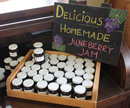 FRUIT PRODUCTION: Grapes, Juneberries
FRUIT PRODUCTION: Grapes, Juneberries
The Northern New York Agricultural Development Program Economic Impact Report notes that research in 2015 added to the knowledge base for the regional production of cold hardy grape varieties, and juneberries. The first juneberry nursery and production research center in New York State was established with NNYADP funding at the Cornell Willsboro Research Farm in Willsboro, NY.
FRUIT PRODUCTION: Apples
The $46.9 million apple industry in northern New York is benefiting from NNYADP research that is helping growers to identify key orchard pests to better target management strategies.
SEASON EXTENSION: Fruits, Vegetables, Herbs
The Northern New York Agricultural Development Program Economic Impact Report cites price per square foot research on the opportunity for increasing numbers of high tunnel growers to reap the economic benefit of crops not traditionally grown in high tunnels. Basil, for example, was evaluated as an excellent economic option at a value of $4.52/sq. ft. of high tunnel space, while ginger can sell for as much as $16 per pound
SMALL LIVESTOCK: Sheep, Goats
The NNYADP is funding field trials of birdsfoot trefoil, a forage species growing in the region many years ago, on regional sheep and goat farms. Results from 2015 are under scrutiny as a means of controlling parasites in small livestock. The 2012 Census of Agriculture reports $645,000 in NNY regional sales of sheep and goats.
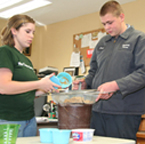 YOUNG FARMERS
YOUNG FARMERS
Results of a survey on how to reach the young farmers in northern NY will be available soon. The region has nearly 300 younger operators of farms.
